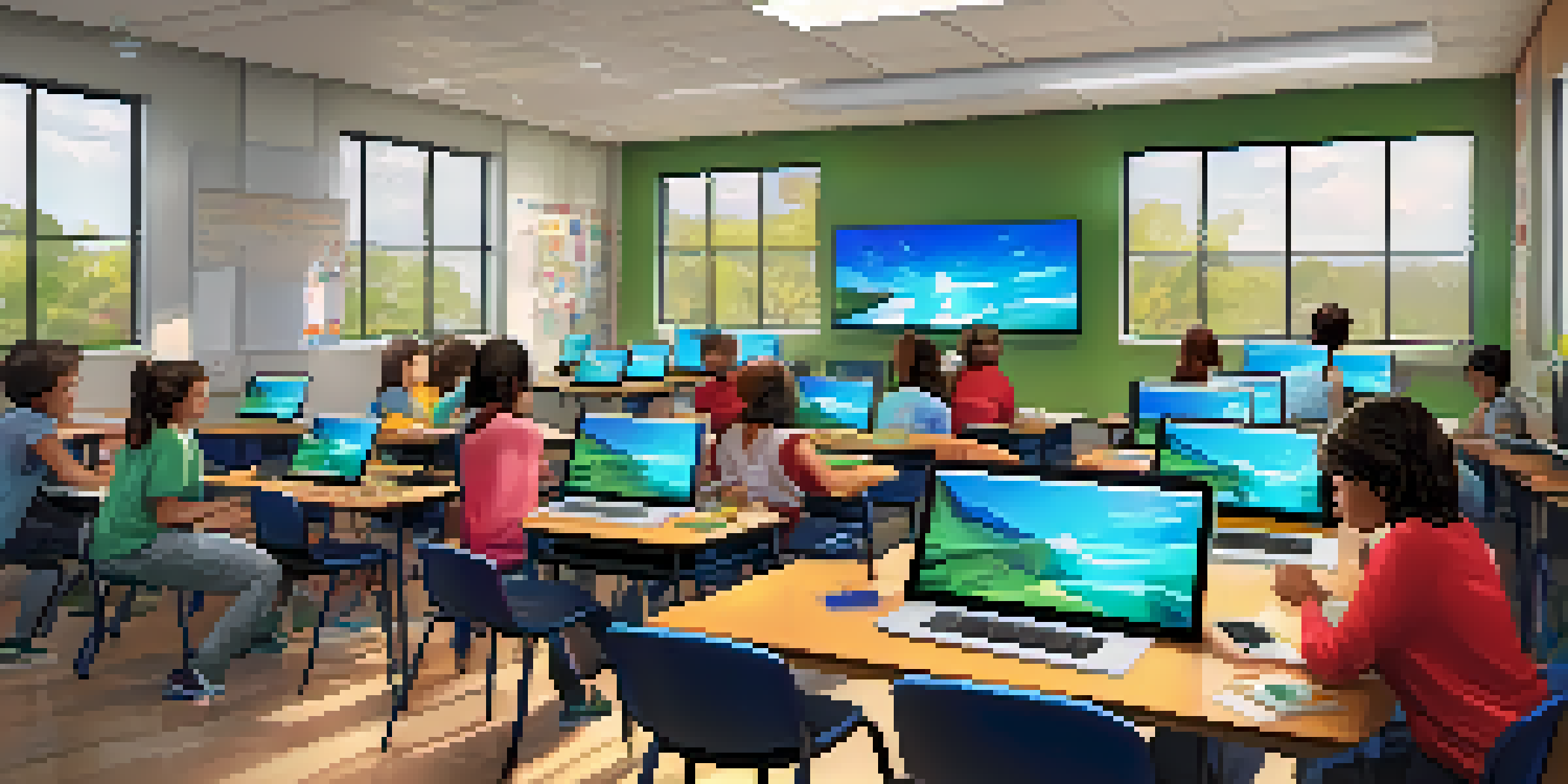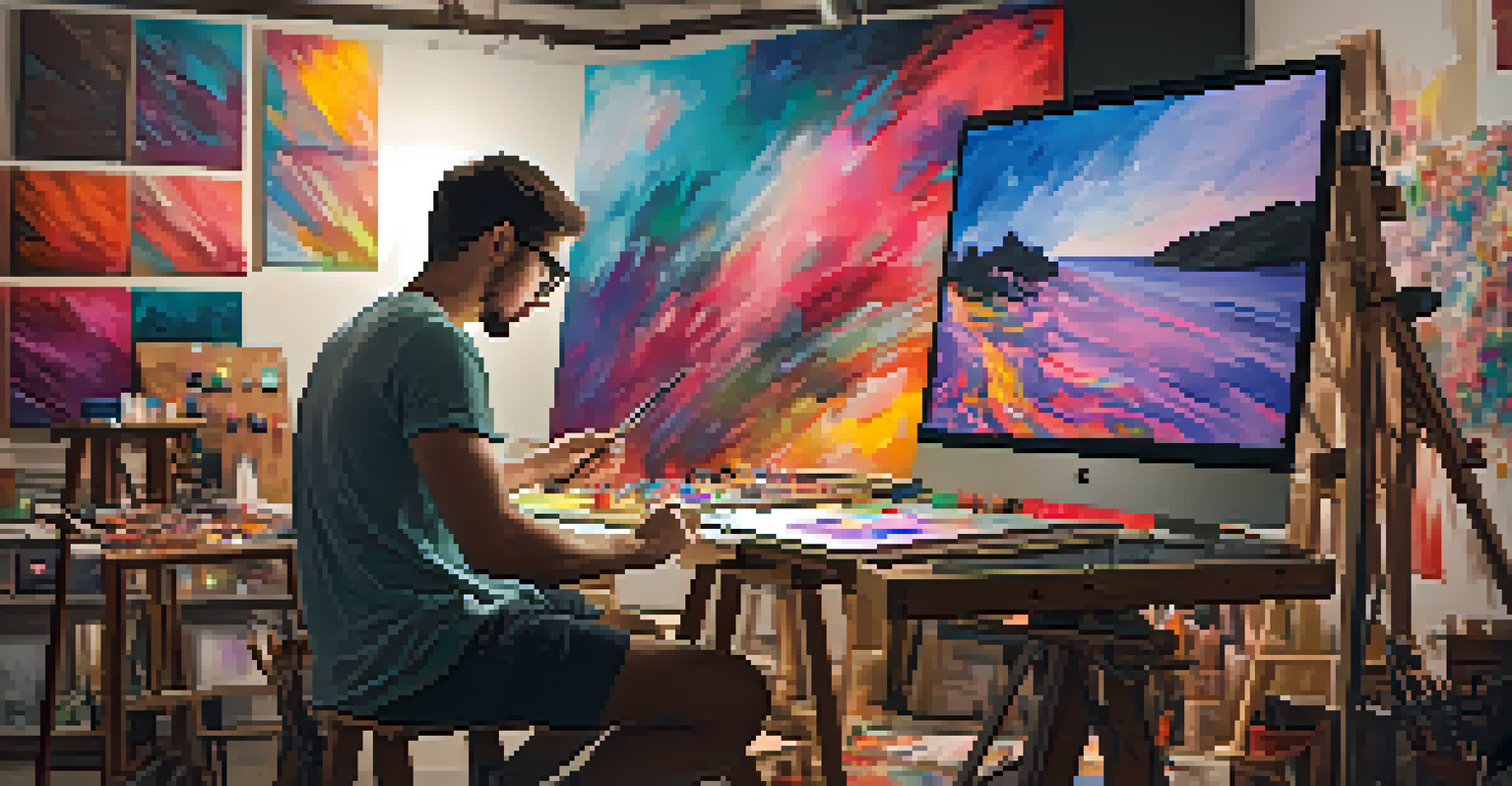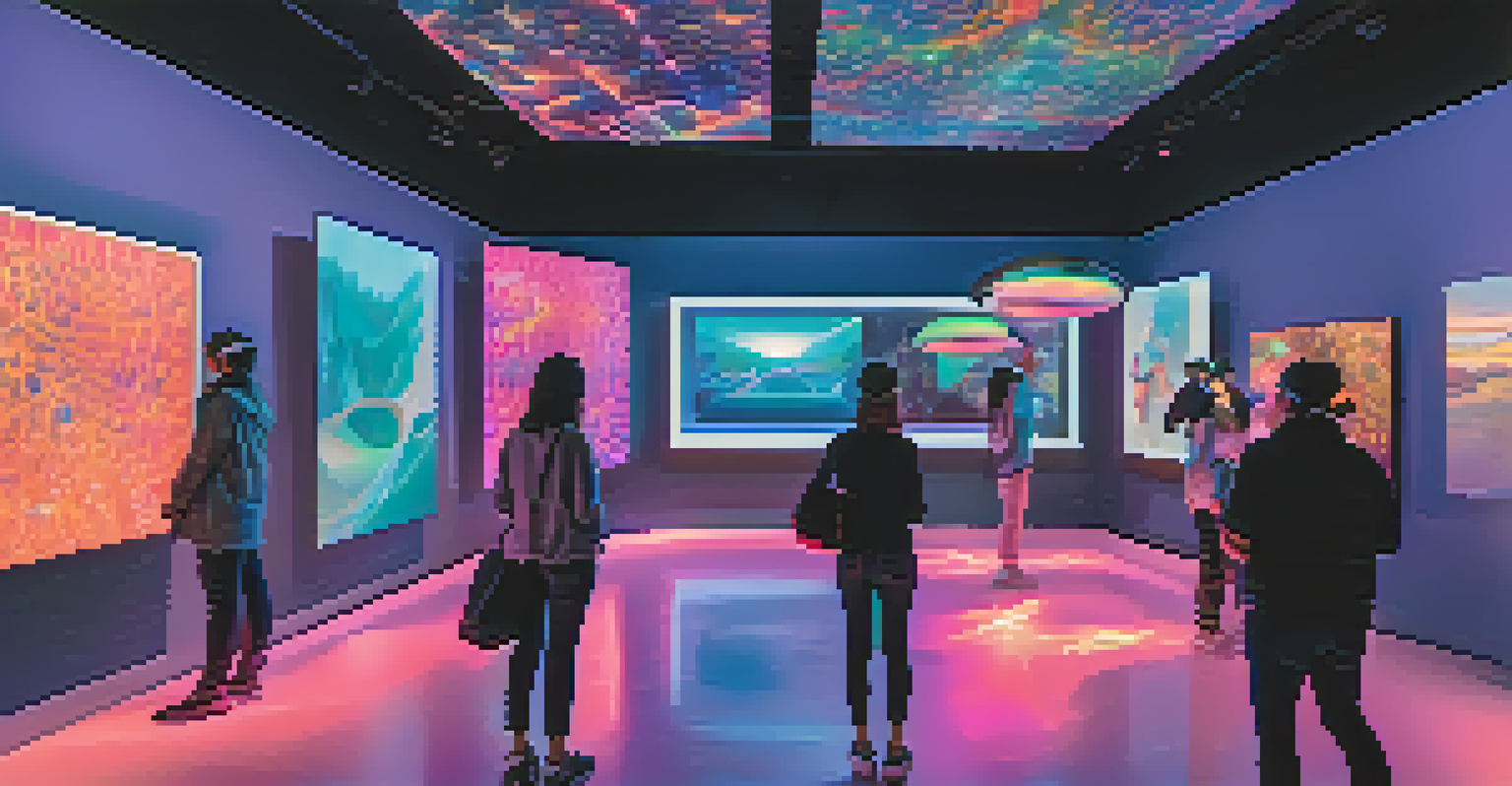Exploring the Role of Digital Tools in Art Education Today

The Evolution of Art Education in the Digital Age
Art education has transformed significantly with the advent of digital tools. Traditionally, artists relied on physical mediums and classroom interactions to learn techniques and concepts. Today, students can access a wealth of online resources, tutorials, and workshops that enhance their learning experience. This shift has made art education more accessible and diverse, opening doors for aspiring artists from various backgrounds.
The best way to predict the future is to create it.
Moreover, online platforms provide a space for collaboration and feedback, where students can share their work and receive constructive criticism. This immediate access to a global community enriches their creative process and helps build confidence. The ability to learn from artists around the world encourages a broader perspective on techniques and styles, fostering a more inclusive art education.
As digital tools continue to evolve, they bring new opportunities and challenges. Educators must adapt their teaching methods to incorporate these technologies effectively, ensuring that students develop both traditional skills and digital literacy. This balance is essential for preparing artists to thrive in an increasingly digital world.
Benefits of Online Learning Platforms for Art Students
Online learning platforms have revolutionized how art students access education. With a simple internet connection, learners can explore various art forms, styles, and techniques at their own pace. Courses offered by renowned artists and institutions are now just a click away, making high-quality education more attainable than ever before.

These platforms often include interactive elements, such as video tutorials, forums, and live Q&A sessions, which enhance the learning experience. This interactivity helps students engage with the material more deeply and allows for real-time feedback from instructors and peers. Such engagement fosters a sense of community, even in a virtual environment.
Digital Tools Enhance Art Education
The integration of digital tools has transformed art education, making it more accessible and interactive for students worldwide.
Additionally, many online platforms offer flexible schedules, enabling students to balance their education with other commitments. This flexibility is particularly beneficial for those who may be working or have family responsibilities. By accommodating diverse lifestyles, digital tools empower a broader range of individuals to pursue their artistic passions.
Integrating Technology in Traditional Art Classrooms
The integration of technology into traditional art classrooms enhances the learning experience for students. Teachers can utilize digital tools to demonstrate techniques, showcase examples, and facilitate discussions. For instance, using projectors or tablets during lessons allows for a dynamic presentation of concepts, making it easier for students to grasp complex ideas.
Art is not freedom from discipline, but disciplined freedom.
Moreover, technology enables educators to incorporate multimedia elements into their curriculum. For example, students can analyze video art, digital installations, and virtual exhibitions, expanding their understanding of contemporary art practices. This exposure nurtures critical thinking and inspires creativity, as students learn to appreciate diverse art forms.
However, the challenge lies in ensuring that technology complements rather than overshadows traditional skills. Educators must strike a balance between teaching foundational techniques and introducing digital tools. This integrated approach prepares students to navigate both the physical and digital realms of art.
Empowering Creativity through Digital Art Tools
Digital art tools have opened up new avenues for creativity among students. Programs like Adobe Photoshop, Procreate, and Blender allow artists to experiment with various styles without the limitations of physical materials. This freedom encourages risk-taking and innovation, essential qualities in an artist's development.
Additionally, digital tools often come with features that facilitate exploration and experimentation. For example, layers, brushes, and filters can be easily manipulated, offering countless possibilities for artistic expression. This versatility empowers students to push boundaries and discover their unique voices.
Flexibility of Online Learning
Online learning platforms offer flexible schedules and diverse resources, empowering students to pursue their artistic passions at their own pace.
As students become proficient in digital art creation, they are also preparing for future career opportunities in fields such as graphic design, animation, and game development. By embracing these tools, art education can remain relevant and aligned with industry demands, equipping students with valuable skills for their professional journeys.
Challenges of Digital Tools in Art Education
Despite the numerous benefits, the integration of digital tools in art education comes with its own set of challenges. One significant issue is the digital divide, where not all students have equal access to technology and the internet. This disparity can hinder participation in online courses or limit the ability to engage with digital tools effectively.
Additionally, the overwhelming abundance of resources available online can be daunting for students. With so many tutorials and courses to choose from, it can be challenging to identify which sources are credible and align with their learning goals. Educators play a crucial role in guiding students toward quality resources and helping them navigate this vast landscape.
Furthermore, some educators may be resistant to adopting digital tools in their teaching. This reluctance can stem from a lack of familiarity with technology or concerns about diminishing traditional artistic practices. To overcome this hurdle, professional development and support are essential for educators to feel confident in integrating digital tools into their classrooms.
The Role of Social Media in Art Education
Social media platforms have become vital tools for art students and educators alike. They provide a space for artists to showcase their work, connect with other creatives, and gain exposure to a wider audience. Platforms like Instagram and Pinterest serve as a source of inspiration, allowing students to discover new styles and trends within the art community.
Moreover, social media facilitates networking opportunities, as students can engage with established artists and art organizations. This interaction can lead to mentorship, collaboration, and even job opportunities in the future. Building a professional online presence is increasingly important for artists looking to establish their careers.
Social Media's Role in Art
Social media platforms serve as powerful tools for networking, inspiration, and exposure, helping art students connect with the broader creative community.
However, it's essential for students to navigate social media mindfully. While it can be a powerful tool for exposure, it can also lead to comparison and self-doubt. Educators should encourage students to use social media as a means of inspiration rather than a metric of success, fostering a healthy relationship with their artistic journey.
Future Trends in Art Education and Digital Tools
As technology continues to evolve, so too will the landscape of art education. Emerging trends, such as virtual reality (VR) and augmented reality (AR), have the potential to transform how students experience and create art. Imagine stepping into a virtual gallery or using AR to enhance traditional artworks in real-time; these innovations could redefine engagement with art.
Additionally, the rise of artificial intelligence (AI) tools is beginning to influence art creation and education. AI-driven platforms can analyze student work and provide personalized feedback, helping learners improve more quickly. As these technologies become more integrated into the classroom, they will offer new ways to support creativity and skill development.

Ultimately, the future of art education will likely involve a harmonious blend of traditional and digital practices. By embracing these advancements while honoring the foundations of art, educators can prepare students for a dynamic and ever-changing creative landscape.